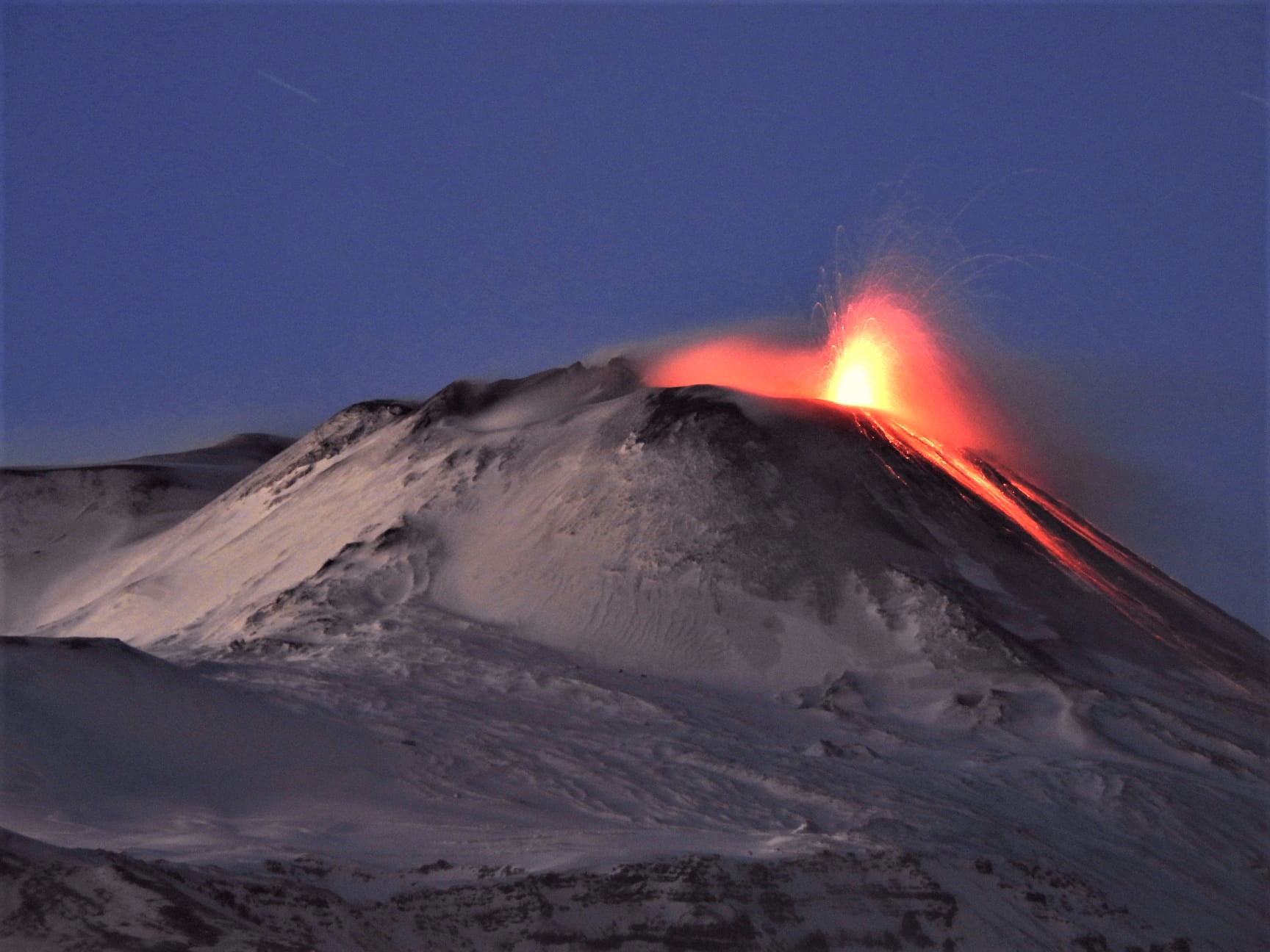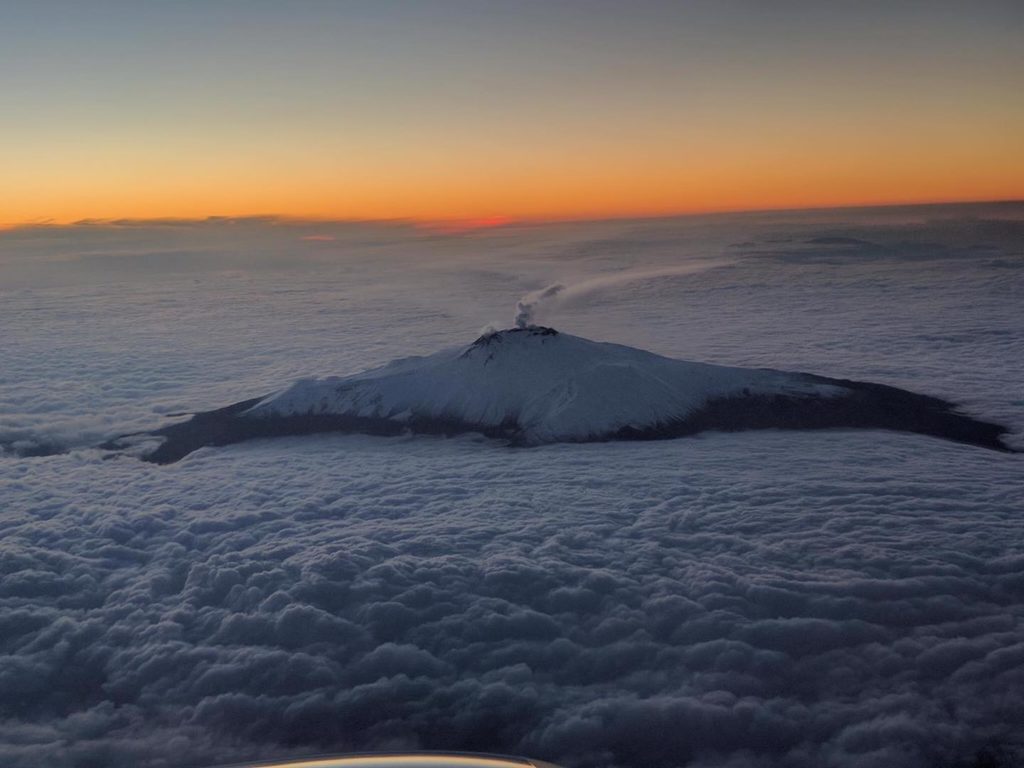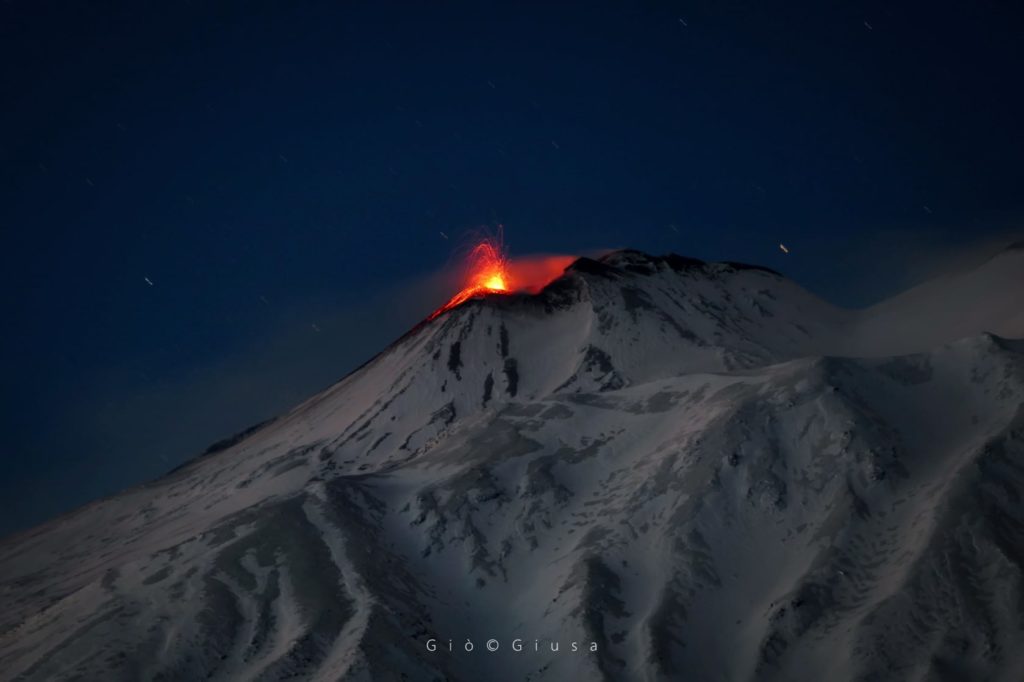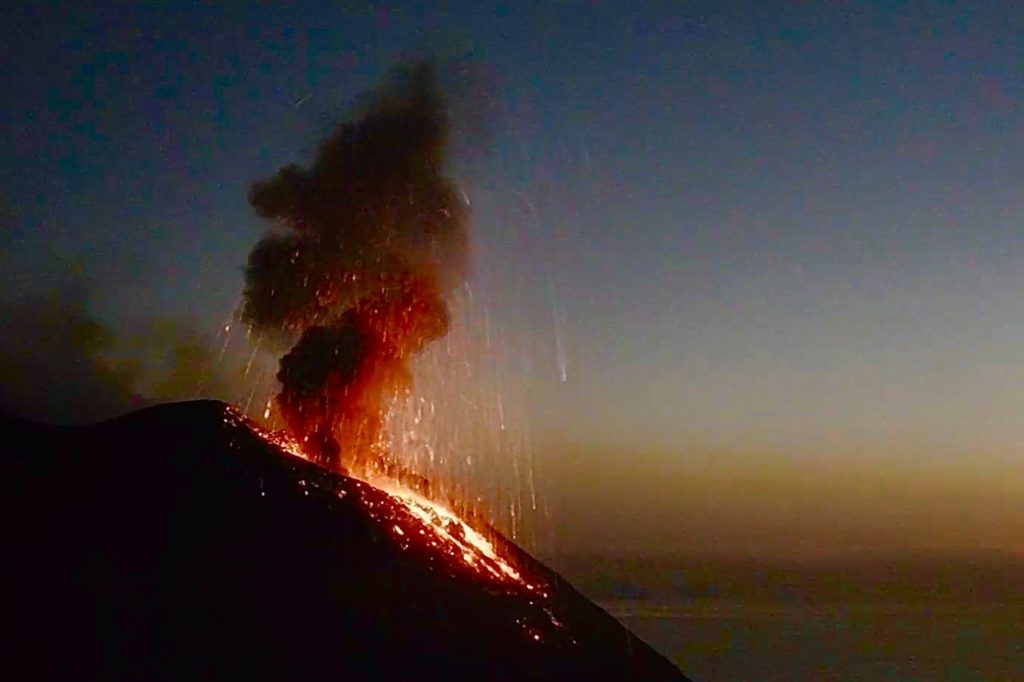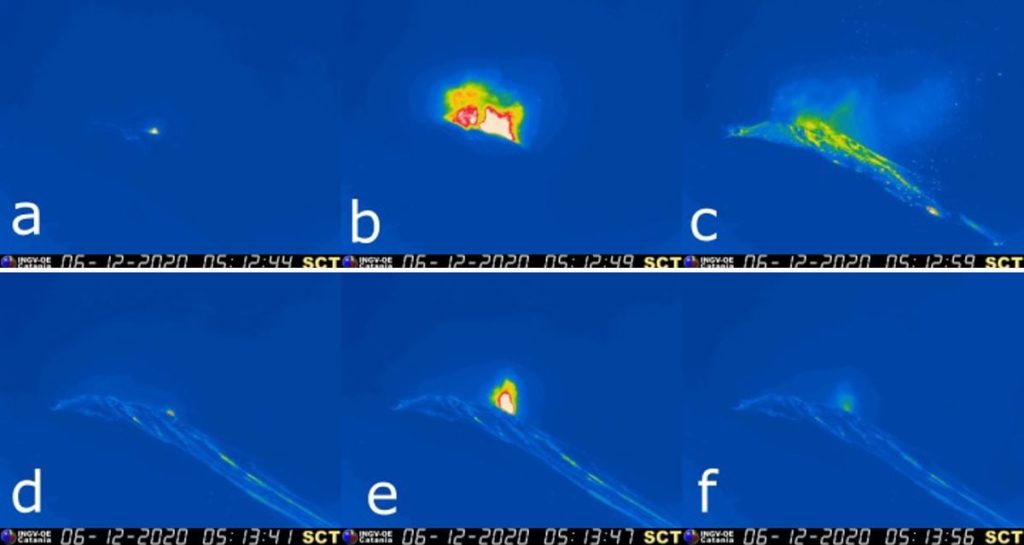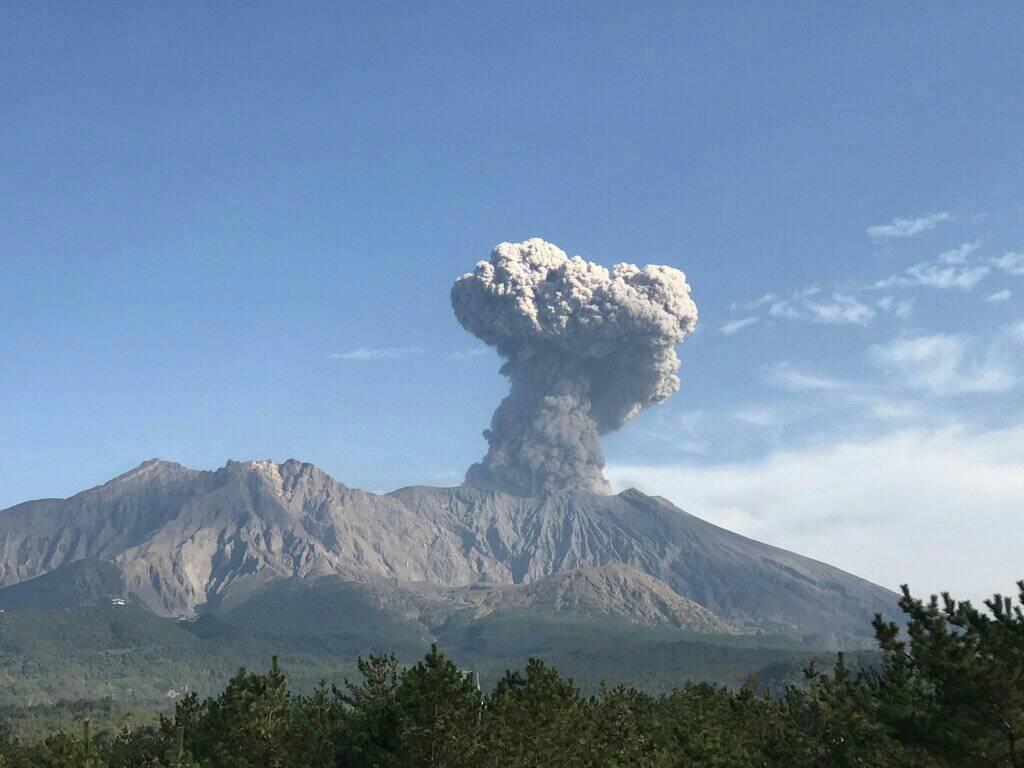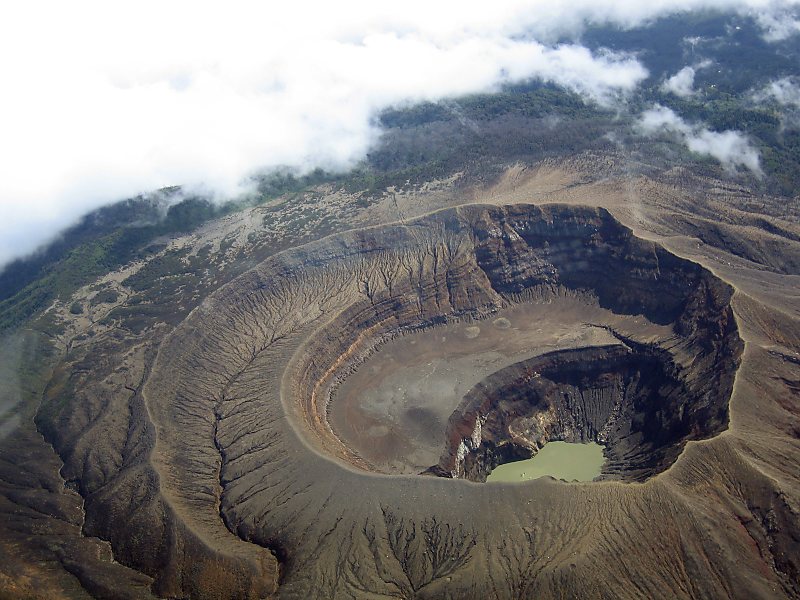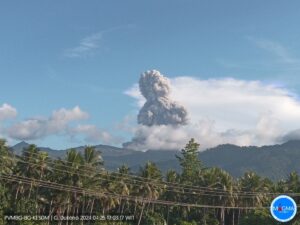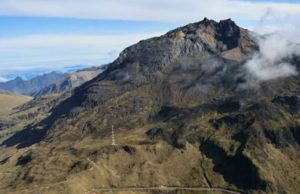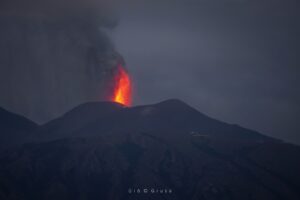December 10 , 2020.
Italy / Sicily , Etna :
Weekly bulletin, from November 30, 2020 to December 06, 2020 (issue date 12/08/2020)
SUMMARY OF THE STATE OF ACTIVITY.
In the light of surveillance data, it is highlighted:
1) VOLCANOLOGICAL OBSERVATIONS: Strombolian activity of variable intensity with modest ash emission at the Southeast Crater, deep intra-crater Strombolian activity at the Northeast Crater and at the Bocca Nuova, degassing activities at the Voragine Crater.
2) SEISMOLOGY: Moderate seismic activity linked to fracturing phenomena. The mean amplitude of the volcanic tremor remained at medium-high levels until December 4 and thereafter at medium levels.
3) INFRASON: moderate infrasound activity.
4) DEFORMATIONS: No significant change to report for the tilt sensor networks and GNSS
5) GEOCHEMISTRY: SO2 flux: medium
HCl flux: medium-low Soil CO2 flux is at medium-high levels.
The partial pressure of dissolved CO2 does not show significant changes.
The value of the C / S ratio is at medium-low levels (last measurement dated 10/16/2020).
The isotope ratio of helium is at average values (last update 11/26/2020).
6) SATELLITE OBSERVATIONS: The thermal activity in the summit area is at a low level.
VOLCANOLOGICAL OBSERVATIONS
The monitoring of the volcanic activity of Etna in the week in question was carried out by analyzing the images of the network of surveillance cameras of the INGV, Osservatorio Etneo (INGV-OE). Due to adverse weather conditions, observation of volcanic activity was limited.
During the period under review, summit craters were generally characterized by Strombolian intracrater activity at Southeast Crater (SEC), Northeast Crater (NEC), and Bocca Nuova Crater (BN).
In detail, the intracrater strombolian activity at the Southeast Crater (SEC) continues with varying intensity and frequency and with more energetic transients in which the eruptive activity was observed simultaneously both to the mouth of the saddle and from the easternmost mouth of the SEC complex.
During the most intense phases, the material produced by the eruptive activity fell back outside the crater rim and deposited on the outer sides of the cone. The explosive activity also produced discontinuous and modest volcanic ash emissions which are rapidly diluted into the atmosphere and / or dispersed near the summit area.
With regard to the Bocca Nuova and the Northeast Crater, the deep Strombolian intracrater activity continued in both complexes with varying intensity in explosions and episodically coupled with slight ash emissions. Finally, the Voragine crater was characterized by a persistent variable degassing regime.
Volcanic tremor:
The average amplitude of the seismic signal, until December 4, is characterized by values oscillating around the threshold of separation between the average and high values.
Subsequently, a downward trend was observed which brought the values, stably, to an average level.
The centers of gravity of the sources of the seismic signals are located in the area of the Southeast Crater at an altitude of between 2800 and 2900 m above sea level, as observed for several months, even if there is a lower degree of regrouping than in previous weeks.
Source : INGV.
Photos : Gianluca Rizzo , Gio Giusa , Boris Behncke .
Italy , Stromboli :
Weekly bulletin, from November 30, 2020 to December 06, 2020 (issue date 12/08/2020)
SUMMARY OF THE STATE OF ACTIVITY
In the light of surveillance data, it is highlighted:
1) VOLCANOLOGICAL OBSERVATIONS: Normal explosive volcanic activity of Strombolian type at low level (3-5 events / h) interrupted on December 6 by an explosive sequence of strong energy. The intensity was low both in the North crater area and in the Center-South area.
2) SEISMOLOGY: The seismological parameters do not show any significant changes, except for the explosive event stronger than the ordinary activity recorded at 05.12 UTC on 06/12.
3) DEFORMATIONS: No significant change recorded by the tilt sensor networks and GNSS
4) GEOCHEMISTRY: SO2 flux: medium-low
C / S report: there is no updated data
The isotopic ratio of Helium is at average values (R / Ra = 4.37 sampling on November 24).
5) SATELLITE OBSERVATIONS: The thermal activity in the summit area is at a low level.
VOLCANOLOGICAL OBSERVATIONS
In the observation period, the eruptive activity of Stromboli was characterized by the analysis of the images recorded by the surveillance cameras INGV-OE located at an altitude of 190 m, in Punta Corvi and at an altitude of 400 m.
On December 6, 2020 at 05:12:44 UTC, an explosive sequence of high intensity affected the Central South zone. (Fig. 3.1 a).
The first and most energetic impulse probably came from the central area of the crater terrace. The ballistics generated by the explosion reached an estimated height of 300
m and had a radial distribution with an abundance of pyroclastic products which fell back along the Sciara generating two small flows (Fig. 3.1 b-c). The duration of this pulse was about 10 s and ended with an ash plume.
The second pulse started at 05:13:41 UTC (Fig. 3.1d), and had a lava fountain character that was most likely emitted from the southern area of the crater terrace (Fig. 3.1e-f). The duration of this second pulse is estimated at around 25 s and the maximum height reached by the products at around 200 m.
Fig. 3.1 – Significant images of the event of December 6, 2020 taken by the thermal camera at altitude 190 (SCT).
In the area of the North crater, the N1 crater, with two emission points, produced low intensity explosions (less than 80 m high) emitting fine materials (ash) sometimes mixed with coarse materials (lapilli and bombs ). The N2 vent showed mainly low intensity explosive activity emitting coarse material sometimes mixed with finer material. The average frequency of explosions varied between 2 and 4 events / h.
In the Center-South zone, the explosions emitted mainly fine materials, with an average intensity (the products reached 150 m in height). The explosive activity showed very low hourly frequency values (between no event / hr and approximately 1 event / hr).
Source : INGV.
Photos : Webcam , INGV.
Japan , Sakurajima :
JMA reported that during 30 November-7 December incandescence from Minamidake Crater (at Aira Caldera’s Sakurajima volcano) was often visible nightly. An explosion on 2 December produced an eruption plume that rose 1 km above the crater rim and blended into weather clouds. Volcanic bombs were ejected 1-1.3 km away from the crater. That same day the sulfur dioxide emission rate was high, at 2,500 tons per day. During 4-7 December two eruption plumes rose as high as 1.2 km above the crater rim. The Alert Level remained at 3 (on a 5-level scale).
The Aira caldera in the northern half of Kagoshima Bay contains the post-caldera Sakurajima volcano, one of Japan’s most active. Eruption of the voluminous Ito pyroclastic flow accompanied formation of the 17 x 23 km caldera about 22,000 years ago. The smaller Wakamiko caldera was formed during the early Holocene in the NE corner of the Aira caldera, along with several post-caldera cones. The construction of Sakurajima began about 13,000 years ago on the southern rim of Aira caldera and built an island that was finally joined to the Osumi Peninsula during the major explosive and effusive eruption of 1914. Activity at the Kitadake summit cone ended about 4850 years ago, after which eruptions took place at Minamidake. Frequent historical eruptions, recorded since the 8th century, have deposited ash on Kagoshima, one of Kyushu’s largest cities, located across Kagoshima Bay only 8 km from the summit. The largest historical eruption took place during 1471-76.
Source: Japan Meteorological Agency (JMA) , GVP.
Photo : Rizal M.
Kamchatka , Karymsky :
VOLCANO OBSERVATORY NOTICE FOR AVIATION (VONA).
Issued: December 09 , 2020
Volcano: Karymsky (CAVW #300130)
Current aviation colour code: ORANGE
Previous aviation colour code: yellow
Source: KVERT
Notice Number: 2020-236
Volcano Location: N 54 deg 2 min E 159 deg 26 min
Area: Kamchatka, Russia
Summit Elevation: 4874.08 ft (1486 m)
Volcanic Activity Summary:
The explosive activity of Karymsky volcano resumed. The ash explosions of the volcano up to 6-7 km a.s.l. began from about 20:45 UTC on 09 December. Ash clouds are drifting to the northwest of the volcano.
This activity of the volcano continues. The ash explosions up to 16,400-23,000 ft (5-7 km) a.s.l. could occur at any time. Ongoing activity could affect low-flying aircraft.
Volcanic cloud height:
19680-22960 ft (6000-7000 m) AMSL Time and method of ash plume/cloud height determination: 20201209/2230Z – Himawari-8
Other volcanic cloud information:
Distance of ash plume/cloud of the volcano: 37 mi (60 km)
Direction of drift of ash plume/cloud of the volcano: NW / azimuth 315 deg
Start time of explosion and how determined: 20201209/2045Z – Satellite data
Source : Kvert .
Photo : D. Melnikov, IVS FEB RAS, KVERT ( 14/8/2019 )
El Salvador , Santa Ana :
Santa Ana volcano (Ilamatepec)
Location: shared by the departments of Santa Ana and Sonsonate
Altitude: 2381 meters above sea level
Type of volcano: Stratovolcano
Type of activity: Vulcanian – Strombolian
Last eruption: October 1, 2005
The seismic vibration of the Santa Ana volcano remained between 16 and 23 RSAM units, on average per day. In other words, within a normal range. During the month of November, a total of 42 earthquakes were recorded, related to the movement of fluids in the volcanic system
.
Regarding the earthquakes associated with the fracturing of distal faults, 19 were recorded, among them, twelve presented sufficient energy to be localized, with depths less than 10 kilometers and, with a magnitude between M0.7 and M3, 1, two were reported to be felt by locals in Juayúa, about 15 km from the volcano.
Concerning Sulfur Dioxide (SO2) emissions, measured with DOAS equipment, they fluctuated between 81 and 253 tonnes per day (tonne / d), with an average of 194 tonnes / d. The guards who were in the area of the volcano, report the increase in the water level of the lagoon.
According to the analysis of monitoring data, the volcano remains with low and normal activity.
Source : Marn .
Photo : José Fernández, U.S Air Force

